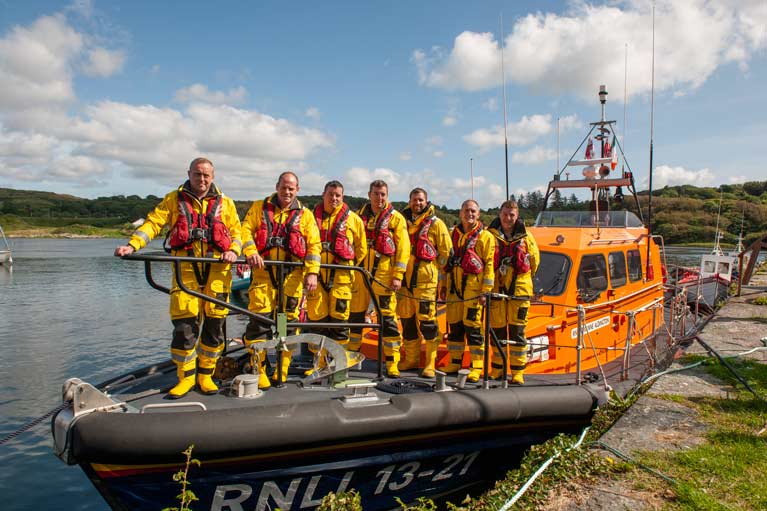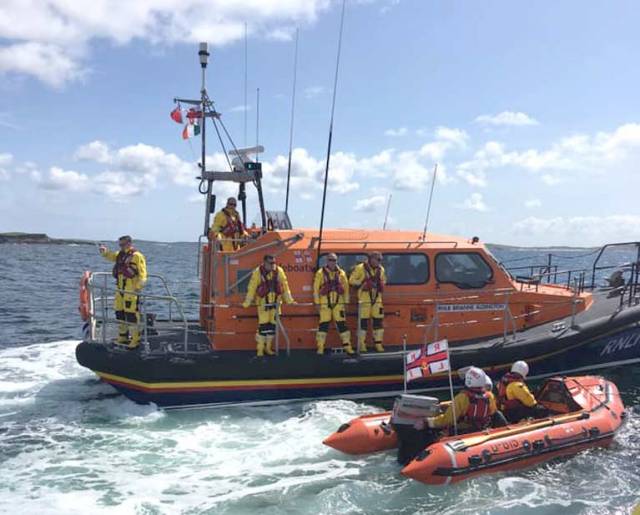North Connemara’s Clifden has become the first west coast RNLI station to receive a new Shannon-class lifeboat writes Lorna Siggins.
The all-weather Shannon, which was designed by an Irish engineer and is the first RNLI class to be named after an Irish river, was given a warm welcome by several hundred people at Clifden Quay yesterday.
Named the Brianne Aldington, the 13-metre Shannon reduces response times to call-outs, as it has a top speed of 25-knots. It replaces the Mersey-class 15 knot vessel at Clifden and represents a 2.4 million euro investment by the RNLI in the west coast.

The Shannon was designed by Derry man Peter Eyre who as a child was rescued by Lough Swilly RNLI in Donegal. It has a maximum speed of 25 knots and an endurance of 250 nautical miles.
It is propelled by waterjets, rather than propellers, and it can be driven directly onto a beach for recovery.
The vessel can be recovered directly from the beach by her launch and recovery tractor. Once winched up from the beach, the tractor’s carriage revolves 180 degrees so that the lifeboat is repositioned for relaunching.
The 24-person voluntary crew at Clifden includes a husband and wife and a father and son, while two of its four coxswains are brothers.
Clifden RNLI coxswain James Mullen recalled yesterday how the station received its first all-weather craft three years ago and was thrilled then.
“ However, with the arrival of the Shannon, we have 21st-century lifeboat design and technology. Bringing her home to Clifden from Poole was one of my proudest moments. As we rounded Loop Head we hit a bit of weather and we really made her dance,” he said.
“ The ergonomic seats bear the force of the impact of the lifeboat hitting the waves, and the improved communications technology means the crew can talk to each other by linked headsets and can hear each other above the noise and receive information directly from the Coast Guard,” Mr Mullen said.
The Clifden crew have trained intensively since May and will consolidate this off the Connemara coast before the Shannon is declared on service and the Mersey is retired. The former lifeboat will be sold on to a charity.
The RNLI says the first planned outing for the new lifeboat is to visit the nearby island communities on Inishbofin and Inishturk.
The new vessel left RNLI headquarters in Poole for Clifden on July 24th for its delivery run across the Irish Sea, crewed by two coxswains, David Barry and Alan Pryce, two mechanics, Thomas Davis and Andrew Bell and navigator Owen Hayes.
There are currently two Shannon-class lifeboats at Lough Swilly in Donegal and Clogherhead, Co Louth, and a relief vessel at the Wicklow station.
Clogherhead received its Shannon-class in early June. The vessel was funded through a generous legacy by a Wexford farmer, Mr Henry Tomkins, who was a lifelong supporter of the RNLI. Mr Tomkins stipulated that a lifeboat be named after former Arklow RNLI coxswain Michael O’Brien, his lifelong friend.































































